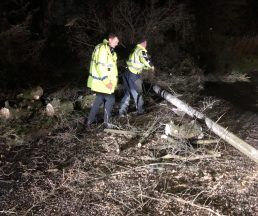An investigation has found that a pilot may have survived an aircraft crash if he had warn his harness.
The 69-year-old pilot of the Pegasus Quik lost control of the aircraft after starting it up at East Fortune Airfield, East Lothian on June 1, 2022.
The Air Accidents Investigation Branch (AAIB) carried out an investigation into the incident saying that it occurred after the engine suddenly shot to a high rpm.
The aircraft accelerated over the ground and became airborne with the base bar attached to the front strut before it crashed into the adjacent field.
The pilot was recovered from the crash but died eight days later from head injuries sustained in the collision.
A post mortem examination revealed that the pilot suffered a “severe” blow to the right side of his head.
The AAIB report said that it is likely that the pilot started the engine with the hand throttle open and did not free the base bar, reduce the rpm or stop the engine before the aircraft became airborne.
Following an in-depth investigation the AAIB concluded that the pilot might have survived if he had been wearing his shoulder (diagonal) harness and his helmet had been designed to protect him from rotational head injuries.
However, the use of a diagonal harness is not a requirement for microlight flyers due to concerns of it restricting movement.
The AAIB recommended that the Civil Aviation Authority review this policy.
Follow STV News on WhatsApp
Scan the QR code on your mobile device for all the latest news from around the country


 iStock
iStock
























